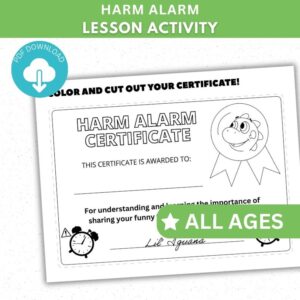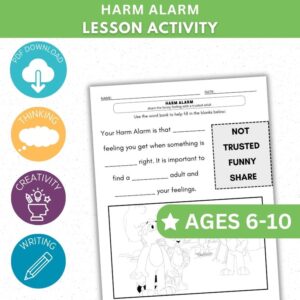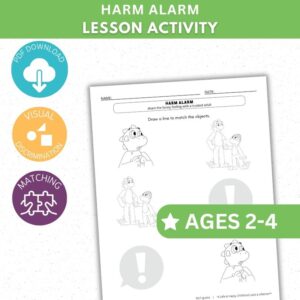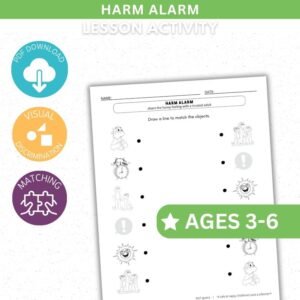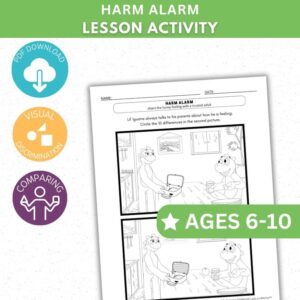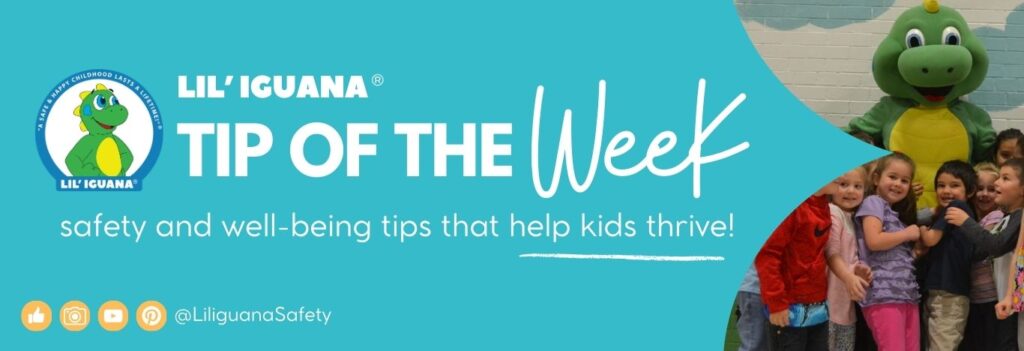
As the school year kicks off and kids transition into new routines, it’s a time filled with excitement, new experiences, and sometimes a bit of uncertainty. Whether it’s meeting new teachers, making new friends, or navigating different environments, these changes can trigger a mix of emotions in our children.
That’s why it’s more important than ever to talk about the Harm Alarm—a vital safety tool that helps kids recognize and respond to those uneasy feelings when something doesn’t seem right. While the Harm Alarm is essential year-round, it becomes especially crucial during times of change, like the start of a new school year.
Let’s dive into why this conversation matters and how you can help your child understand and trust their Harm Alarm.
What is Your Harm Alarm?
Your Harm Alarm is that uneasy feeling you get when something doesn’t seem right. It’s that inner voice or gut feeling that tells you when you might be in danger or when a situation feels uncomfortable. This could happen when you’re faced with a decision about going somewhere, doing something, or even interacting with someone. Your Harm Alarm is your body’s way of alerting you that something isn’t quite right, and it’s important to listen to it.
Why You Need to Talk to Your Kids About Their Harm Alarm
Kids are naturally curious and sometimes can find themselves in situations where they feel unsure or uncomfortable. By talking to them about their Harm Alarm, you’re giving them the tools to recognize when something is off and the confidence to act on it. This conversation is crucial because it empowers children to trust their instincts, seek help, and stay safe. Kids need to know that it’s okay to feel scared, embarrassed, or uneasy and that these feelings are valid and important signals.
How to Talk to Your Kids About Their Harm Alarm
Start Simple: Begin by explaining what a Harm Alarm is in terms they can understand. You might say, “Your Harm Alarm is like a little voice inside you that says ‘something doesn’t feel right.’ It’s there to help keep you safe.”
Use Examples: Share real-life scenarios that they might encounter, such as feeling uncomfortable if someone they don’t know asks them to keep a secret or if they’re asked to go somewhere without a grown-up.
Role-Playing: Practice different situations where their Harm Alarm might go off. Ask them what they would do if they felt something wasn’t right. This helps them rehearse how they would react in real life.
Reassure Them: Let your child know that it’s okay to speak up when they feel their Harm Alarm. Remind them that they can always come to you or another trusted adult if they’re unsure about something.
Make it Ongoing: The conversation about the Harm Alarm shouldn’t be a one-time thing. Revisit it regularly, especially when new situations arise, like starting a new school year, meeting new people, or visiting new places.
By talking to your kids about their Harm Alarm, you’re giving them the knowledge and confidence to navigate the world safely. It’s a simple yet powerful way to help them trust their instincts and know they can always turn to you for support.
Printable Activity
Tag @LiliguanaSafety on socials and hashtag it #liliguanafun


